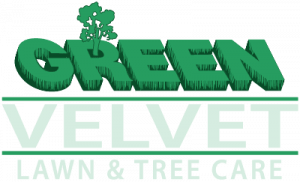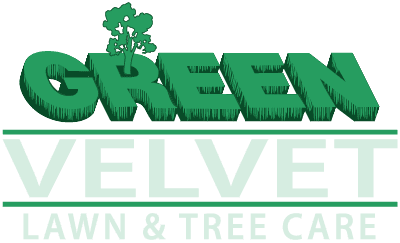Fertilizer and Weed Control
Green Velvet’s turf fertilizers contain slow-release nitrogen to feed your lawn slowly over the season. Our technicians can inform you on how to maintain a lush, green, weed-free lawn.
A healthy lawn needs to be fed at least three times a year and have a winterizer application in the fall to strengthen the root system over the winter. We only apply weed control where you have weeds. Our trucks are equipped with an injection system that enables us to spot-spray the weeds on your lawn. If you have no weeds, all you receive is liquid fertilizer. Herbicide is used as a tool to control the weeds. After initial control, we promote proper practices (mowing, watering, aerating & fertilization) to maintain a weed-free lawn.
Lawn Mowing
Mowing practices have more impact on weed invasion in turf than any other lawn routine! Infrequent mowing in which turf is severely scalped causes root die back, forces re-growth from auxiliary buds which consumes stored carbohydrates, and results in thin turf that is slow to recover and to gain density. In hot weather, turf may die on irregular patches after severe scalping. Reduced turf density allows weed invasion due to lack of competition. Once weeds invade, they often spread rapidly, since many (rosette types) are relatively unaffected by the infrequent scalping.
Regular mowing (i.e. approximately weekly) will allow the turf to achieve maximum density throughout the course of the year. Under these conditions, turf will compete favorably with many common weed species, including common dandelion.
Irrigation
Irrigation ranks with mowing in its positive impact on weed encroachment. Over-irrigation is a primary reason annual bluegrass invades many lawns. Surface wetness is conducive to seed germination and also shifts the competitive edge toward existing annual bluegrass plants. Proper irrigation means thoroughly wetting the root zone, then allowing soil to dry until incipient wilting occurs in desirable grasses. Thus, turf density remains high, and surface conditions are not conducive to germination of weed species.
Core Aeration
Cores of soil are punched 3/4″ diameter and 2 – 2 ½” deep and spaced less than 5″ apart. Aeration increases the infiltration and efficiency of water, air and nutrients. It is a good service for clay soil and helps to break up thatch buildup.
Top Dressing
The use of mulch in many landscapes is increasing dramatically. Mulches are widely used for weed suppression, water conservation, improving the nutrient content of the soil, and for ease of care. Inorganic and organic mulches are available.
Top dressing is the application of fine particles of organic material over the surface of turfgrass (lawn). A thin layer of fine mulch evenly applied over the turfgrass settles down into the thatch. When properly applied, water conservation, moderation of root temperatures, enhanced soil quality, and weed suppression can be seen as the results.
Doing Your Part and Caring For Your Lawn
When you see a lawn that is a uniform green colour through the summer months, you’ll find an efficient watering system. There are some “water me” signs that will help you to determine when to water your turf.
Water in the early morning or evening. If footprints remain in the turf or disappear slowing, your lawn needs water. Indicator spots dry quicker than other turf areas. They turn a dark bluish-green, then to an orange or straw-yellow. As well, soil taken from a 3” depth under your lawn should hold together under pressure (if the ball is somewhat crumbly but holds together under pressure it is time to water).
How long to water? 1” of water will moisten 6” of soil. Place a water cup in your sprinkler area and determine the time needed to fill it up to 1”. This is the water required every 7 days. In the summer heat, every 3-4 days may be needed.
When mowing, sharpen your mower blades regularly. A dull blade will leave grass tips looking off-colour – the tips have been torn, not cut.
CONTACT US
Green Velvet Lawn and Tree Care Ltd.
5212-27th Avenue Vernon, B.C. V1T 6L3
Phone: (250) 542-8719
Fax: (250) 542-8265

